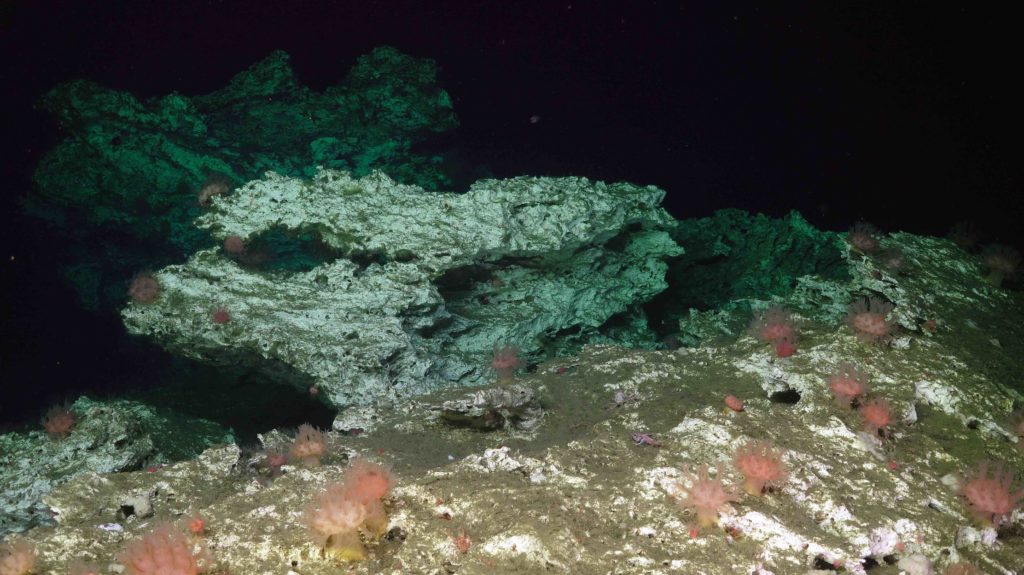

Southern Hydrate Ridge (SHR) is a highly dynamic environment with multiple sites where methane gas bubbles are issuing from the seafloor, derived from methane hydrate in the subsurface. The hydrates are compounds that form when methane (CH4) and water combine to form an ice-like lattice in which CH4 is concentrated in a solid form. It is estimated that 500-2500 gigatons of methane carbon is sequestered in gas hydrates at continental margins, such as Cascadia off of Washington and Oregon.

.
At SHR, the subsurface hydrate results in a rugged sedimented terrane marked by abundant hummocks, formed by the underlying hydrate. Under the right temperature-pressure regimes, such as those that exist at SHR, free methane gas issues from the seafloor as bubble plumes – at Einstein’s Grotto, this release can be explosive, blowing sediment out from collapsed areas hosting exposed hydrate. Immediately as the bubbles exit from the sediment, the bubbles are encased in hydrate, allowing the bubble plumes to rise several hundred meters above the seafloor. Here, the CH4 is oxidized by microbes, creating a highly biologically productive environment as evidenced by swarms of krill at this horizon and larger fish. The seepage of methane also supports an amazing biological community at SHR.
Vigorous emissions of methane along faults, coupled with microbial interactions at SHR have resulted in the formation of a spectacular limestone deposit called the “Pinnacle” just a few hundred meters to the west of the main seep sites at the summit of SHR. Here, a 50-60 m carbonate deposit rises from the seafloor called a chemoherm, thought to be formed by the interaction of microbes that generate a reducing environment enabling carbonate to precipitate. Dating of the Pinnacle carbonates indicates it is 7300 to 11,400 years in age (Teichert et al., 2003).

This incredibly rugged deposit is marked by very small to large cavities that host an astounding ecosystem protected by predators because of the small “caves”. It is an absolutely amazing place to dive with large expanses of gorgeous, pink, soft corals, crabs, tiny lobsters and shrimp, hag fish and rock fish, and sponges, as well as isolated areas of large clams and orange and white microbial mats, where methane is seeping from the deposit. It is easy to get lost in this surprisingly beautiful place – the closer you look, the more life peaks out at you. Southern Hydrate Ridge has been declared an ‘essential fish habitat’ free of fishing.

During Leg 3, we will visit another extreme environment – hydrothermal vents at the summit of Axial Seamount.
